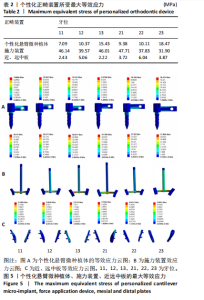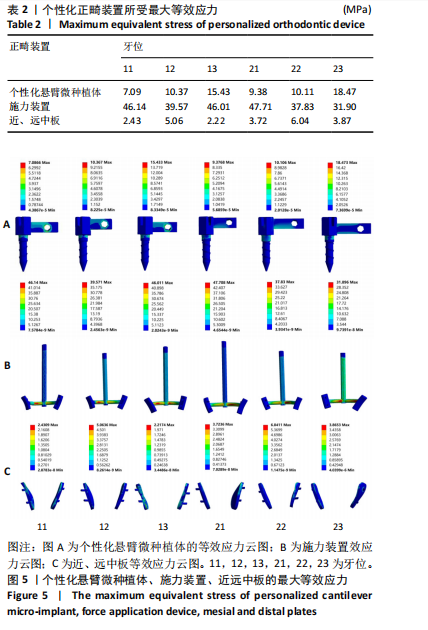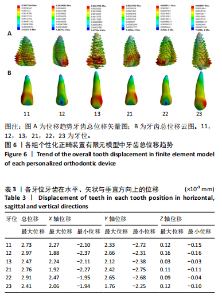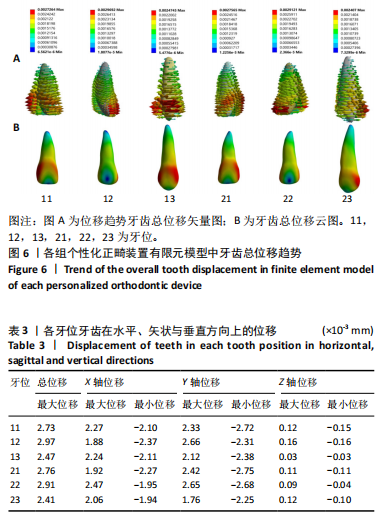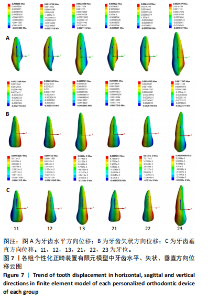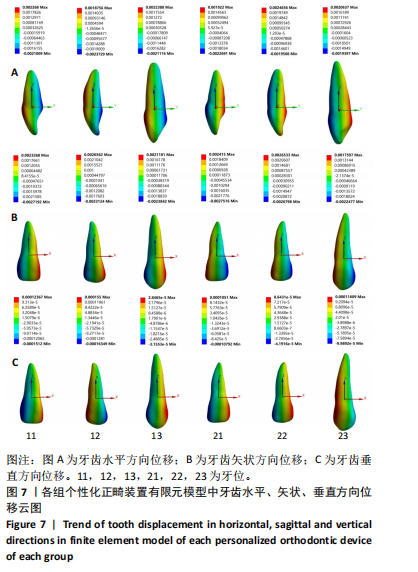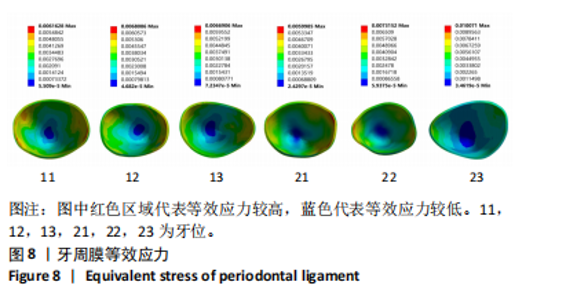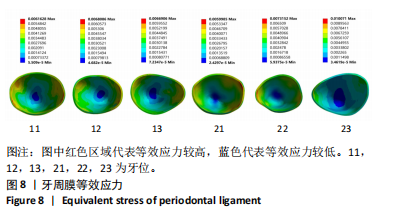[1] 李惠琴, 王春娟, 王禹, 等.无托槽隐形矫治器治疗下颌不同形态扭转牙的三维有限元分析[J].中国组织工程研究,2023,27(7): 1050–1054.
[2] GUPTA SK, SAXENA P, JAIN S, et al. Prevalence and distribution of selected developmental dental anomalies in an Indian population. J Oral Sci. 2011;53(2):231-238.
[3] 王珊珊. 二氧化锆全瓷冠修复成人前牙轻度错的临床研究[J].数理医药学杂志,2019,32(7):1008-1009.
[4] ZHAO J, SU M, ZHAO Q, et al. 3D Finite Element Study of the Physiological Anchorage Control Concept on Anchorage Molars in Lingual Orthodontics. J Healthc Eng. 2022;2022:1421586.
[5] PAPADIMITRIOU A, MOUSOULEA S, GKANTIDIS N, et al. Clinical effectiveness of Invisalign® orthodontic treatment: a systematic review. Prog Orthod. 2018;19(1):37.
[6] MURPHY SJ, LEE S, SCHARM JC, et al. Comparison of maxillary anterior tooth movement between Invisalign and fixed appliances. Am J Orthod Dentofacial Orthop. 2023;164(1):24-33.
[7] D’ANTÒ V, RONGO R, CASABURO SD, et al. Predictability of tooth rotations in patients treated with clear aligners. Sci Rep. 2024;14(1): 11348.
[8] HAOUILI N, KRAVITZ ND, VAID NR, et al. Has Invisalign improved? A prospective follow-up study on the efficacy of tooth movement with Invisalign. Am J Orthod Dentofacial Orthop. 2020;158(3):420-425.
[9] CORTONA A, ROSSINI G, PARRINI S, et al. Clear aligner orthodontic therapy of rotated mandibular round-shaped teeth: A finite element study. Angle Orthod. 2020;90(2):247-254.
[10] ELKHOLY F, MIKHAIEL B, SCHMIDT F, et al. Mechanical load exerted by PET-G aligners during mesial and distal derotation of a mandibular canine : An in vitro study. J Orofac Orthop. 2017;78(5):361-370.
[11] UMALKAR SS, JADHAV VV, PAUL P, et al. Modern Anchorage Systems in Orthodontics. Cureus. 2022;14(11):e31476.
[12] THRESHER RW, SAITO GE. The stress analysis of human teeth. J Biomech. 1973;6(5):443-449.
[13] ELIADES T, PANAYI N, PAPAGEORGIOU SN. From biomimetics to smart materials and 3D technology: Applications in orthodontic bonding, debonding, and appliance design or fabrication. Jpn Dent Sci Rev. 2023; 59:403-411.
[14] JIA L, WANG C, WANG C, et al. Efficacy of various multi-layers of orthodontic clear aligners: a simulated study. Comput Methods Biomech Biomed Engin. 2022;25(15):1710-1721.
[15] CHENG Y, GAO J, FANG S, et al.Torque movement of the upper anterior teeth using a clear aligner in cases of extraction: a finite element study. Prog Orthod. 2022;23(1):26.
[16] LU Y, CHANG S, YE J, et al. Finite Element Analysis of Bone Stress around Micro-Implants of Different Diameters and Lengths with Application of a Single or Composite Torque Force. PloS One. 2015;10(12):e0144744.
[17] WANG Y, CHEN J, QIN S, et al.An in vivo evaluation of clear aligners for optimal orthodontic force and movement to determine high-efficacy and periodontal-friendly aligner staging. Heliyon. 2023;9(4):e15317.
[18] 孙志涛, 汪钰程, 崔玉美,等.正畸力内收前牙对牙槽骨吸收程度不同后牙的影响[J].华西口腔医学杂志,2019,37(3):265-269.
[19] WANG CX, RONG QG, ZHU N, et al. Finite element analysis of stress in oral mucosa and titanium mesh interface. BMC oral health. 2023;23(1): 25.
[20] YAO S, JIANG W, WANG C, et al. Improvements of tooth movement efficiency and torque control in expanding the arch with clear aligners: a finite element analysis. Front Bioeng Biotechnol. 2023;11:1120535.
[21] 王林, 沈刚.口腔医学. 口腔正畸科分册[M]. 北京:人民卫生出版社,2017.
[22] ALKADHIMI A. A novel and simple technique for correcting localised rotations in the early alignment stage. J Orthod. 2020;47(4):338-344.
[23] 赵志河, 周彦恒, 白玉兴. 口腔正畸学[M].7版. 北京:人民卫生出版社,2020.
[24] LIU X, CHENG Y, QIN W, et al. Effects of upper-molar distalization using clear aligners in combination with Class II elastics: a three-dimensional finite element analysis. BMC Oral Health. 2022;22(1):546.
[25] HASEGAWA M, ADACHI T, TAKANO-YAMAMOTO T. Computer simulation of orthodontic tooth movement using CT image-based voxel finite element models with the level set method. Comput Methods Biomech Biomed Engin. 2016;19(5):474-483.
[26] 张亮, 韩泽奎, 臧旖欣, 等. 仿生蛛网孔隙结构3D打印个性化钛网设计及三维有限元分析[J].中国组织工程研究,2023,27(30): 4796-4801.
[27] GEIGER ME, LAPATKI BG. Locating the center of resistance in individual teeth via two- and three-dimensional radiographic data. J Orofac Orthop. 2014;75(2):96-106.
[28] CHOY K, PAE EK, PARK Y, et al. Effect of root and bone morphology on the stress distribution in the periodontal ligament. Am J Orthod Dentofacial Orthop. 2000;117(1):98-105.
[29] JAIN A, PRASANTHA GS, MATHEW S, et al. Analysis of stress in periodontium associated with orthodontic tooth movement: a three dimensional finite element analysis. Comput Methods Biomech Biomed Engin. 2021;24(16):1841-1853.
[30] KUNTZ ML, VADORI R, KHAN MI. Review of Superelastic Differential Force Archwires for Producing Ideal Orthodontic Forces: an Advanced Technology Potentially Applicable to Orthognathic Surgery and Orthopedics. Curr Osteoporos Rep. 2018;16(4):380-386.
[31] QU G, HUANG J, GU G, et al. Smart implants: 4D-printed shape-morphing scaffolds for medical implantation. Int J Bioprint. 2023; 9(5):764.
[32] MOGA RA, OLTEANU CD, DANIEL BM, et al. Finite Elements Analysis of Tooth-A Comparative Analysis of Multiple Failure Criteria. Int J Environ Res Public Health. 2023;20(5):4133.
|
